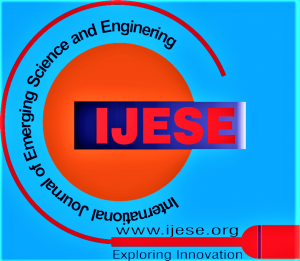![]()
Review of Progress on Plasmonic Enhanced Solar Cells
Cynthia Mwansa1, Reccab Ochieng Manyala2, Geoffrey Chanda3
1Cynthia Mwansa, Department of Physics, The University of Zambia, School of Natural Sciences, Lusaka, Zambia.
2Reccab Ochieng Manyala, Department of Physics, The University of Zambia, School of Natural Sciences, Lusaka, Zambia.
3Geoffrey Chanda, Department of Physics, The University of Zambia, School of Natural Sciences, Lusaka, Zambia.
Manuscript received on 16 June 2025 | First Revised Manuscript received on 26 June 2025 | Second Revised Manuscript received on 08 July 2025 | Manuscript Accepted on 15 July 2025 | Manuscript published on 30 July 2025 | PP: 1-6 | Volume-13 Issue-8, July 2025 | Retrieval Number: 100.1/ijese.H261013080725 | DOI: 10.35940/ijese.H2610.13080725
Open Access | Editorial and Publishing Policies | Cite | Zenodo | OJS | Indexing and Abstracting
© The Authors. Blue Eyes Intelligence Engineering and Sciences Publication (BEIESP). This is an open access article under the CC-BY-NC-ND license (http://creativecommons.org/licenses/by-nc-nd/4.0/)
Abstract: Developments in plasmonic photovoltaics have yielded new mechanisms of trapping light. In this review, we provide an overview of the light-trapping mechanisms to improve the efficiency of solar cells. Specifically, this work presents a concise review and addresses factors such as light absorption, light scattering, near-field enhancement, and localised surface plasmons. Light absorption and charge recombination are the major limiting factors affecting the efficiency of photovoltaic solar cells. The review also examines emerging theories and their relationship to technologies involving plasmonic materials. The use of metallic nanoparticles in solar cells enables the occurrence of surface plasmon resonance (SPR). Surface plasmon resonance occurs when light excites the electrons at the metal surface, causing electrons in the metal to become excited and move parallel to the surface. The surface plasmon resonance induces a resonance effect that occurs when the conduction electrons of metal nanoparticles interact with incident photons. This resonance effect generates an oscillating electric field that drives the conduction electrons to oscillate coherently, inducing a localised surface plasmon (LSP). These localised surface plasmon results in absorption and scattering of light. Light is deflected or re-radiated by the metallic nanoparticles due to the excitation of localised surface plasmons. Hence, plasmonic metallic nanoparticles improve the efficiency of solar cells by concentrating or trapping light at the absorber layer. The dimensions, such as size and shape of the nanoparticles, directly influence both light scattering and near-field enhancement. The elongated nanoparticles interact more effectively with light than spherical nanoparticles, resulting in improved light absorption and enhanced solar cell efficiency.
Keywords: Plasmonics, Light-Rapping, Nanoparticles, Plasmonic Resonance.
Scope of the Article: Nano Technology
